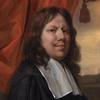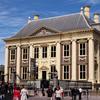More about The Life of Man

Contributor
Jan Steen drank… a lot. So it isn’t unusual that he’d be painting scenes out of taverns.
On the surface, The Life of Man isn’t anything other than a tavern scene. It’s an ensemble painting, where the kids, fathers, barmaids, gather together to dance, flirt, eat oysters, and just pretty much have a grand time and get drunk AF.
Steen had the brewery business in his DNA. His grandfather owned the Red Halberd, a brewery that Steen’s father ended up inheriting. Although a practicing painter, Steen would eventually fall back on the family tradition, and in 1654, he leased his own brewery. The Serpent opened up in Delft where there were probably craft beers made by the hipsters of his time.
This was a short-lived experience because two years later Steen was going around referring to himself as a “former brewer.” Steen wasn’t one to put all his eggs in the same basket. While he operated the brewery, Steen was making contacts in the art world. He wasn’t about the beer life anyways. His bar opened about five miles from the Hague, where Steen had lived and married the daughter of a landscape painter. He wasn’t going to stray far from the art world now.
The Life of Man has another title: The So-Called Brewery of Jan Steen. The brewery featured in the painting could be a scene out of Steen’s own watering hole. The Life of Man was painted about eleven years after Steen opened his own brewery, maybe he was feeling a bit nostalgic? Maybe he remembered some things that happened throughout the bar that made him want to paint it? Like seeing a small kid laying across the ceiling, blowing bubbles beside a skull, make note that both boy and skull are the size of a pinhead in the large painting. In any case, this is a too common scene from a bar, brewery, tavern, pub, whatever you call it; who cares, let’s shut the screens off and go for a pint!
Sources
- Barker, Emma, Art and Visual Culture 1600-1850: Academy to Avant-Garde. Tate Enterprises Ltd., 2013.
- C.J.H., “Notes on the Chronology of Jan Steen,” The Burlington Magazine for Connoisseurs, Vol. 15, No. 76 (1909), pp. 243-244. Accessed July 12, 2020. www.jstor.org/stable/857991.
- Franits, Wayne E., Dutch Seventeenth-century Genre Painting: Its Stylistic and Thematic Evolution. New Haven: Yale University press, 2004.
- Harrison, Charles, Conceptual Art and Painting: Further Essays on Art and Language. Cambridge: The MIT Press, 2001.
- Jones, Jonathan, “The top 10 drinkers in art,” The Guardian, April 2, 2014. Accessed July 12, 2020. https://www.theguardian.com/artanddesign/jonathanjonesblog/2014/apr/01/…
- Roth, Marty, Drunk the Night Before: An Anatomy of Intoxication. Minnesota: University of Minnesota Press, 2005.
- Walsh, John, Jan Steen: The Drawing Lesson. Los Angeles: The Getty Museum, 1996.











